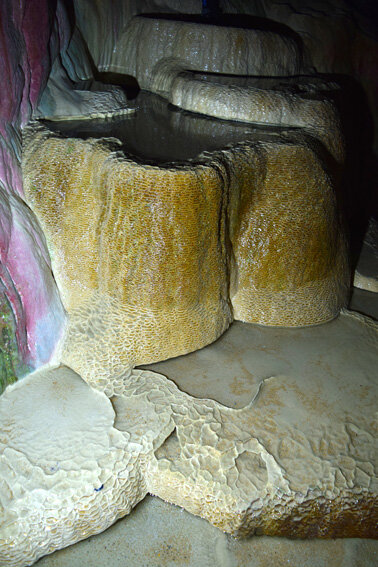Another side of Newquay
Newquay has a reputation as Cornwall’s grim and seedy party town full of stags and hens. We like to give a town the benefit of the doubt and remain open-minded, so we went in search of an alternative Newquay.
We started at Newquay Orchard, a community-built and owned green space in the heart of Newquay. It has a traditional orchard with a cafe and workshop space, wood, community growing space and wildflower meadow, amongst other projects. In summer, a lovely avenue of lavender swarming with bees and butterflies greets you as you enter the orchard. On our way out, we took it as a good sign that a kestral had perched nearby on a post.
We walked down to Trenance Gardens to find a traditional village fete taking place with a toy duck race in the stream and stalls of raffles, crafts, books and bric-a-brac. As well as a boating lake and gardens there’s the charming Grade-II listed Trenance Cottages, apparently the only ‘pre-railway age’ row of dwellings in Cornwall which are open to the public.
The Blue Reef Aquarium was our next destination. Small, drab and uninspired displays unfortunately made it a bit depressing. There’s also a zoo, which we didn’t go to.
Newquay has amazing beaches of golden sand and some decent cafes and restaurants. It has loads of potential but still feels a bit of a dump. Chuck in an art gallery and by 2030 Newquay will be the next St. Ives.
We headed a few miles out of town along the coast to the beach at Holywell Bay, where parts of Poldark was filmed. We were in search of a cave.
Holywell Cave, also known as St. Cuthbert’s Cave, is only accessible at low tide. We found it after several false starts in other caves – but when we saw four young female art students (they later told us) hanging around we guessed it was the place. They were being filmed installing sculptures in obscure sacred places in Cornwall. I’d meant to buy a torch, but forgot (a mobile phone torch wasn’t going to do much). Luckily the girls had a huge one, and lent it us.
Holywell Cave was once one of the most popular holy sites in the UK, a place for pilgrims and the sick – drinking from the cave was said to cure illnesses. Now it is mostly forgotten.
After climbing over large, slippery, seaweed strewn boulders, a surreal sight of lurid green and red rocks appear. Then worn, white stone steps with shallow pools of water in them lead up to a smaller, darker cave. Natural minerals, including limestone and calcium carbonate, create this surreal, otherworldly cave. A natural spring drips water through the ceiling into the cave which flows down the steps onto the beach. This is the holy well which is washed away twice a day by the sea tides.
Previously on Barnflakes
The Huer’s Hut, Newquay
Great Western Beach, Newquay, vs. Fisherman’s Cove, Gwithian




